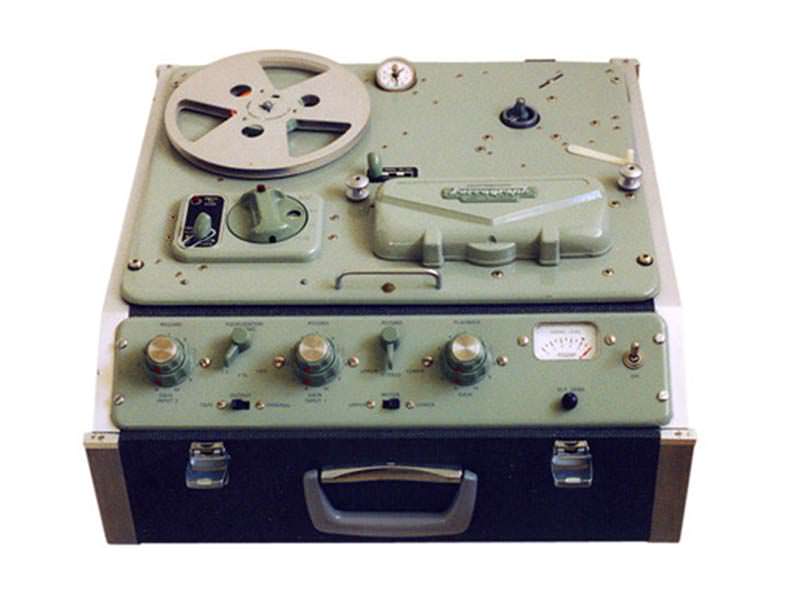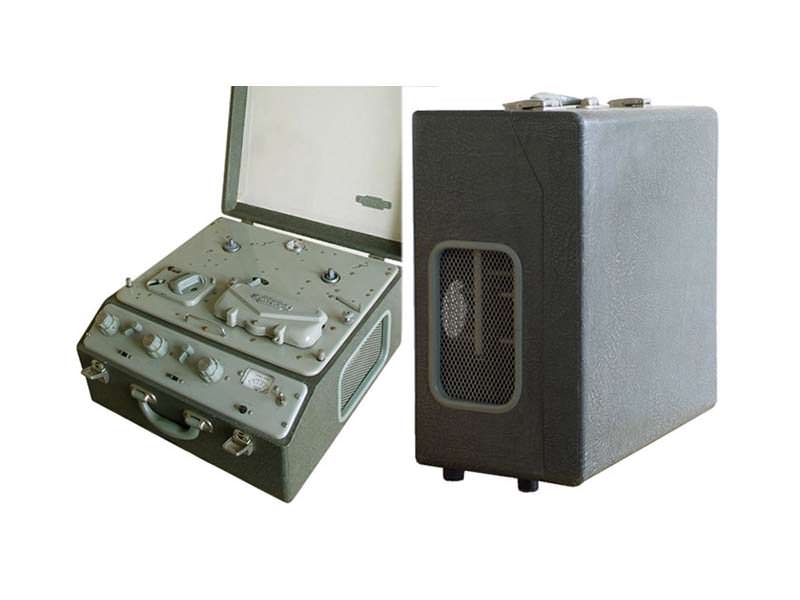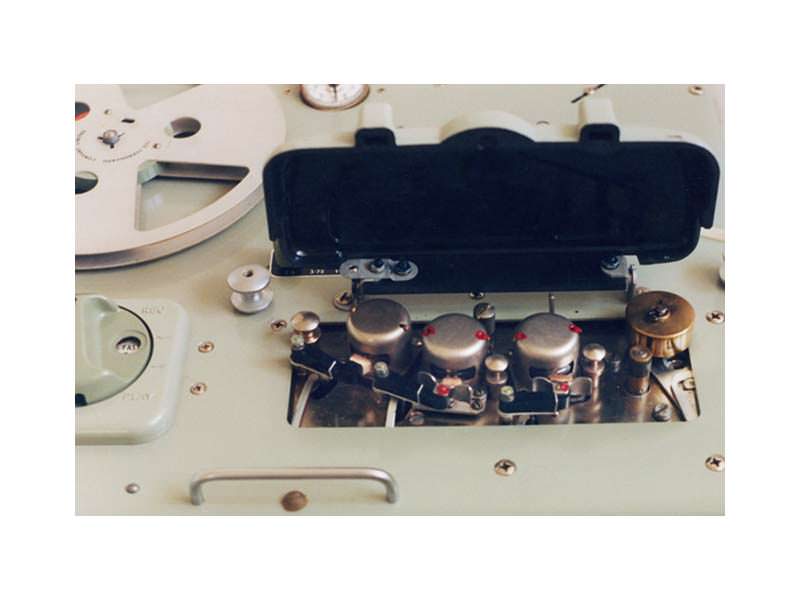Technical Details
Brand: Ferrograph
Model:420
Category:Super High Fidelity
Application:Consumer
Electronics:Tube
Equalization:IEC
Country of Manufacture:United Kingdom
Release dates:1961 - 1964
Tracks:1/2 Rec/PB
Speeds: 3 3/4, 7 1/2
Max Reel Size("): 7"
Number of heads: 3
Head Composition: Permalloy
Head Configuration: Stereo
# Motors: 3
Auto Reverse?:No
Voltage(s): 220-240v
Frequency Response:(all 3 dB): 7½ ips: 40Hz -15kHz
Wow and Flutter:less than 0.2 % at 7½ ips
Signal-to-Noise Ratio:52 db unweighted including hum
Sound quality rating:6 / 10
Long-term reliability rating: 6/ 10
Additional Details
Description
First released late in 1961, the Series 420 consisted of half-track (422) and four-track (424) stereo tape decks utilizing the newer Series 5 transport. The model was a bridge between the older Series 4 and the new Series 5 machines and featured separate record and playback heads. This allowed A/B comparison, echo and recording on one channel whilst playing back on the other. The two operating speeds were 7½ ips and 3¾ ips and a newer, smaller VU meter was fitted.
Speed stability: better than 0.5% / Bias frequency: approx. 68 KHz / Rewind speed: less than 1 minute for 1200ft tape (either direction) / Input levels for full-depth recording: Input 1: min 2mV RMS at 1 Mohm impedance Input 2: min 350mV RMS at 0.5 Mohm impedance / Outputs: 1.0 V RMS impedance 5Kohms / Dimensions (with lid): 18½ ” x 17½” x 9¾ high (470 x 444.5 x 247.5 mm) / Weight: 48 lbs 21.8 kg) / half or quarter-track mono
Additional Info
From The Tape Recorder, October 1962
The Ferrograph recorder needs no introduction; it has a well-earned reputation for reliability and consistent performance under all kinds of conditions. The 422 is a stereo recorder with two channel recording facilities and simultaneous playback for monitoring at line level. An A-B switch allows the recorded signal to be compared with the incoming signal for critical assessment of the recorded quality.
The controls for the two channels are mounted coaxially so that they may be turned together for mixing or fading stereo signals, or they may be moved independently for balance or for separate track recording.
The speed change switch is mechanically linked to the equalisation switch on the front panel so that the starting button will not lock unless the speed and equalisation are matched. Alternative C.C.I.R. and N.A.R.T.B. playback equalisations are provided, but the recording is to N.A.R.T.B. characteristics.
Cross recording from one channel to the other is possible by interconnecting the input and output jacks by a patch cord.
Speed Wow and Flutter
Tape speeds were checked and found to be within 1% of the nominal speeds from beginning to end of the 8¼ in. reels. Wow and flutter were within the specification limit of 0.2% at 7½ ips with the worst reading at 0.16% RMS when the 5 cycle capstan wow coincided on record and play; the best reading, during cancellation, was 0.1%. At the lower speed of 3¾ ips, the combined wow and flutter remained below 0.2% with a contribution from the motor shaft at 25 Hz and a capstan wow at 2½ Hz.
A number of readers have written to ask why several fluttergrams are shown for each speed. The answer is that a one second sample is sufficient if the wow or flutter remains constant from instant to instant; this only occurs if the speed disturbance is fairly random and at a very low amplitude. If several sources of wow or flutter are present, the various cyclical components come in and out of phase from second to second to give a variety of meter readings and an even wider variety of pen recordings. When this happens I usually select a few representative samples to include in the review. Fig. 1 shows just a few of the samples obtained from this machine where 50 Hz pulsating torque from the motor, 25 Hz motor pulley eccentricity and slight capstan eccentricity are present in roughly equal proportions and combine in many different ways.
The high frequency flutters can be disregarded as the ear is insensitive to such speed fluctuations, but the 2½ to 5 Hz capstan wow is within the ear’s most sensitive range and can be clearly heard on a steady tone. Nevertheless the level on this recorder is well below that which can be detected on normal program content. I hope to deal with this in more detail in a future article.
Play Only Responses
Fig. 2 shows the responses obtained when playing standard 100 and 200 microsecond C.C.I.R. test tapes. The dotted curve is for the N.A.R.T.B. equalisation. The 7½ ips response is satisfactory for both standards, but the 3¾ ips response has a bass fall of 5 dB at 100 Hz which indicates that the equalisation time constant should be decreased at this speed. Noise and hum was 40 dB below test tape level at either speed.
Record Replay Tests
An overload test showed that plus 13 dB on test tape level could be recorded with negligible waveform distortion at either speed and that recorded noise due to bias and erase was within 1 dB of bulk erased noise.
The overall record/play response at 7½ ips (N.A.R.T.B. equalisation) is shown by the top curve of fig. 3 and is obviously very satisfactory. The lower curve shows the response at 3¾ ips, and this again shows the bass loss found in the playback tests, and confirms that the playback time constant is too high.
Signal Noise ratio:
A reading of 8 on the peak reading record level meter corresponded to a level 12 dB above test tape level, and measured hum and noise was exactly 52 dB below this signal level as demanded by the specification.
Comment
This is a well engineered and time tested tape transport mechanism combined with relatively new electronics, which feature a push pull oscillator and very elegant and simple record and replay amplifiers using double triode valves throughout for reliability and ease of servicing. D.C. is used on the heaters of all the early stages.
The wow and flutter performance, although adequate, is not up to the highest modern standards. Like a horse’s teeth it tends to give away the age of the beast! The basic design of the Ferrograph deck has not been changed in nearly ten years of production.
The slight fault in the 3¾ ips playback equalisation can be corrected by a slight touch of an internal pre-set control—it is not known whether this is a common trouble or whether it is peculiar to this review sample.
The styling, finish, and general engineering is of course superb, and the prestige value of owning such a machine must be considered if you are in the market for a semi-professional recorder which will not be out of date in another ten years.
A. Tutchings.




